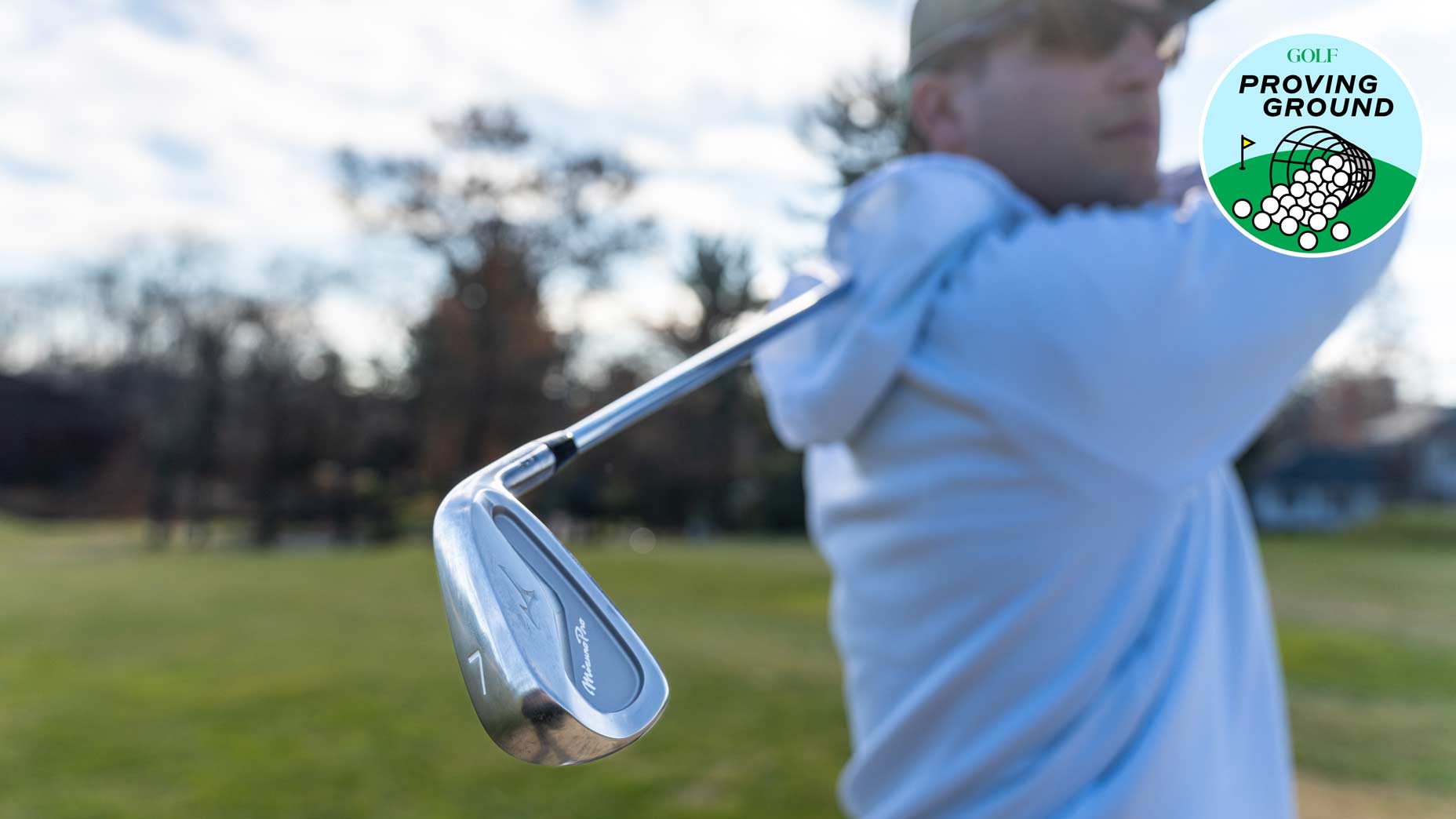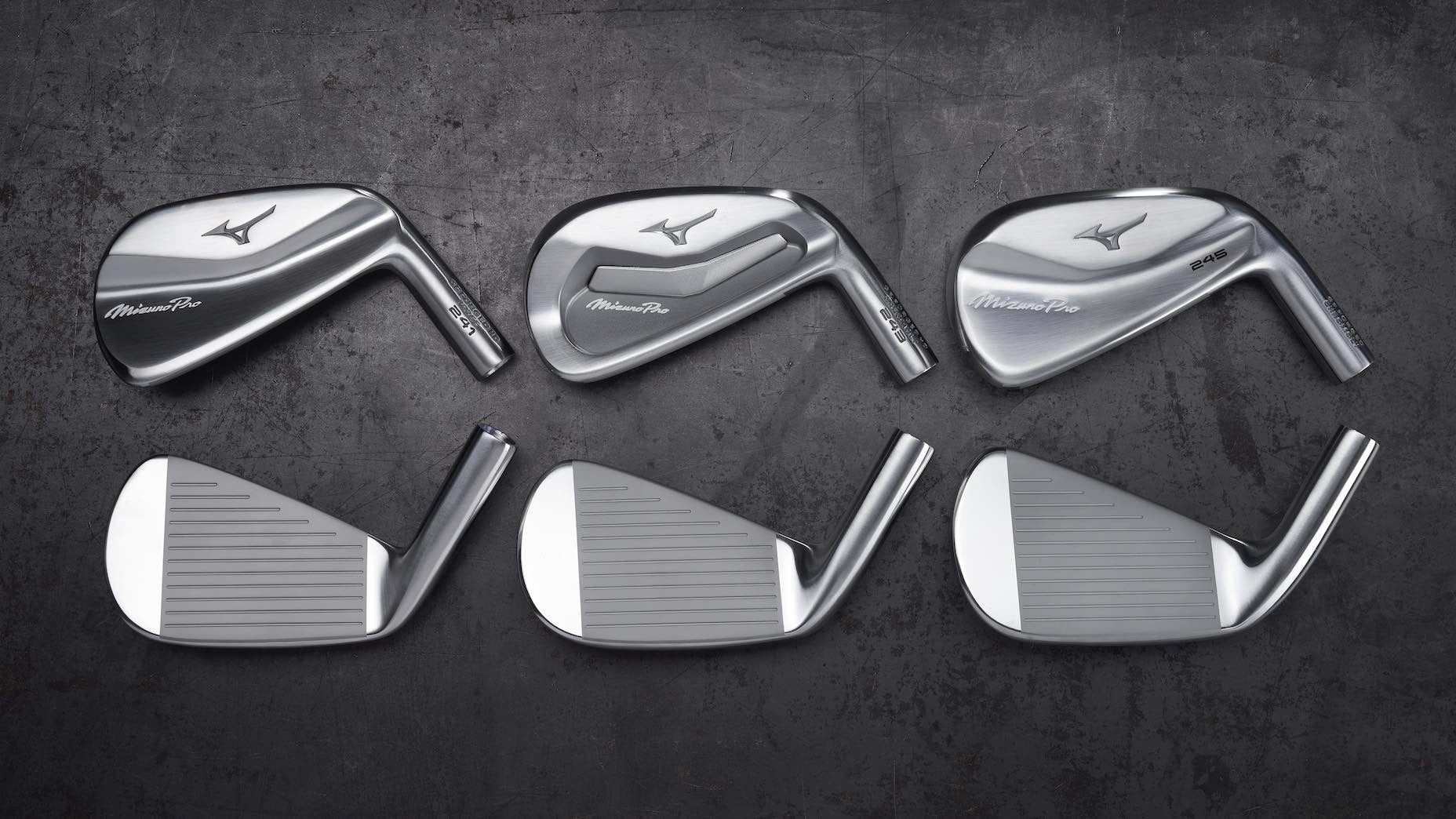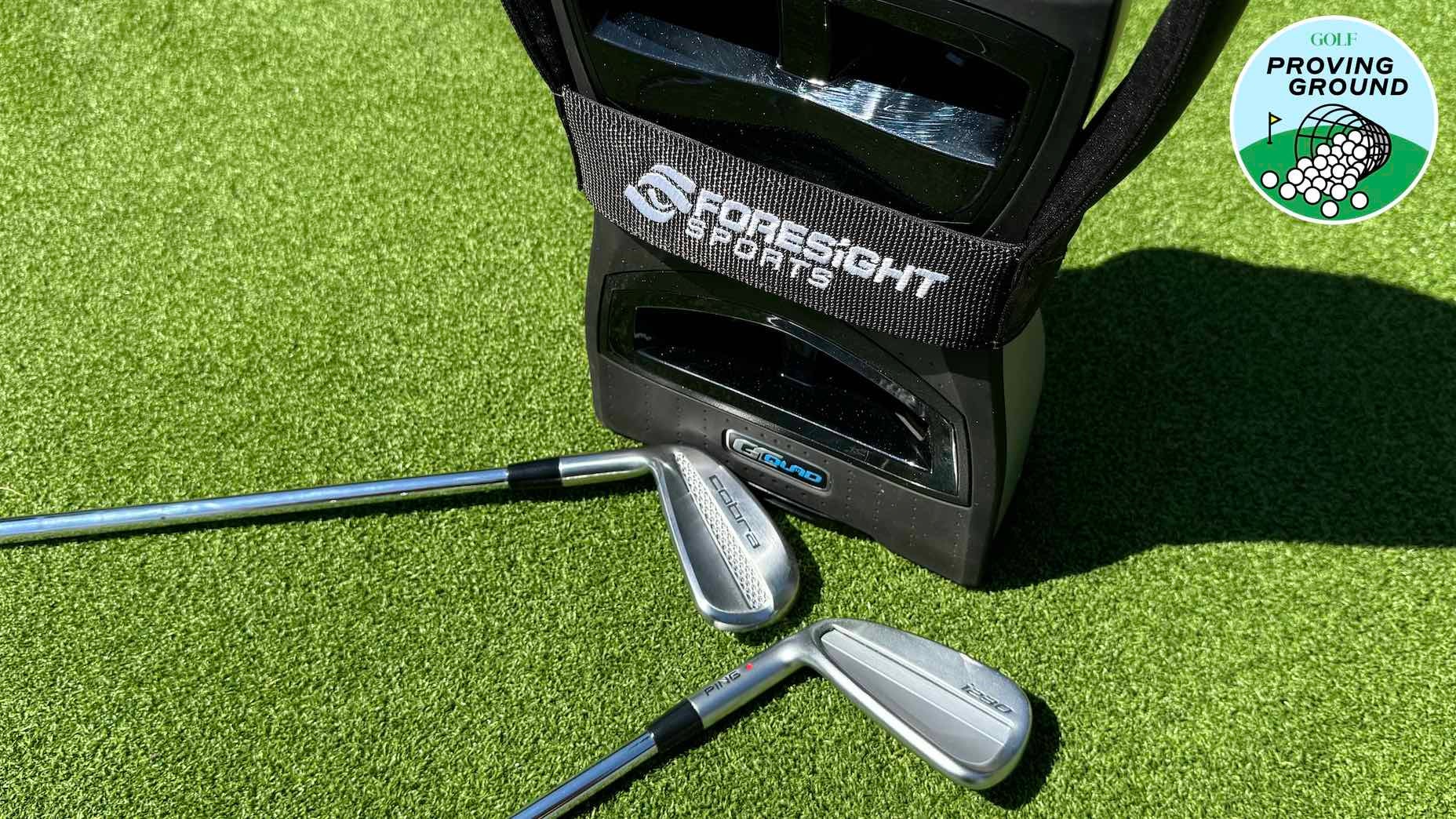Why Mizuno’s Pro 24X line might be their best yet | ClubTest 2024

The author was blown away with Mizuno's Pro 24X irons.
Stephen O'Sullivan
Welcome to GOLF.com’s ClubTest Proving Ground, where Managing Equipment Editor Jonathan Wall and Senior Equipment Editor Ryan Barath — along with a cast of GOLF writers and editors — put the latest designs and groundbreaking technology in the equipment space to the test on the range and the course.
For 2024 ClubTest, we paired members of our staff with the latest gear from manufacturers to give you, the potential club buyer, real insights from real golfers and their firsthand experience testing new clubs.
TESTER: Jack Hirsh (Assistant Editor) | 1.7 handicap
GOAL: To reduce spin on mishits with the driver, gain more control and stopping power with my irons, and add versatility with my wedges.
THE LOWDOWN: There are few things I hate more in my golf game than seeing my ball start left.
It’s a common gripe among better players, but especially so for me given I naturally work a draw. A ball that starts left and goes more left is a big no-no.
And when you’re playing an approach shot like the one at the 18th hole at Harbour Town Golf Links, where left is the watery grave of the Calibogue Sound, I need to have an iron I can trust will start on my intended line, draw back to the target and not turn too far.
Luckily that’s what I had in a brand-new Mizuno Pro 243 7-iron. I’ll spare you all the details, but I lined up at the Quarterdeck (the restaurant below the famous lighthouse) and in near-darkness, landed my approach within a couple of feet of the flag.
Yup, that’s me. You’re probably wondering how I ended up in this situation … and why I’m telling you about it. Let’s rewind a minute.
Since the end of high school, I’ve trended anywhere between a 2 and a +1 handicap index and unfortunately, as of late, I’ve trended more toward the higher end of that spectrum.
However, with a little more availability lately to compete, I’ve been looking to push myself and start competing in some higher-level amateur events; I played my first two USGA qualifiers late last year. I also became more dedicated in the gym and so far have pushed my driver clubhead speed from about 112 mph to about 115 mph.
While hitting it farther than I ever have, the extra speed has some downsides. The most noticeable is how much spin I can generate on mishits with a driver. I still loved my current gamer, but my mishits were creeping well above 3000 rpms and I was struggling to hit flat bombs that got good roll despite cranking my driver loft down to 7 degrees.
As someone who prides themself on being a wannabe gearhead with a pretty good sense of what my specs are and should be, this was a concerning development. Extra speed also didn’t necessarily fix my dreaded left miss, especially with my short irons.
When it came to my wedges, it took some time, but I adjusted from a three-wedge setup that I had used my entire life (46, 52, 58), to a four-wedge setup (46, 50, 55, 60) over the past season. However, having played primarily with specialty gap and sand wedges with 12 degrees of bounce before, I still needed to find a bounce setup that worked well for me.
My fitted gear:
DRIVER: I was fit for the new ST-G 440 9.5˚ driver with a Mitsubishi Kai’li White 60X. Of the two models Mizuno has come out with this year to complement its 2023 offerings (the ST-Z 230 and ST-X 230), the new ST-G and ST-Max fall on the opposite ends of the launch and spin spectrums. The ST-G is the ultra-low spin model and that was like music to my ears.
This driver was like a rocket ship. After playing around with weight tracks on the sole of the club and the quick switch adjustable hosel, I found my perfect setting combination; loft lowered to just above 8 degrees, toe track weight all the way forward (for low spin), and the heel track weight in the middle (keeps a slight fade bias). I was seeing the flat workable ball flight I wanted.
My ball speeds were consistently in the upper 160s, which wasn’t any faster than my gamer, but the spin rates were sometimes as low as 2200 on good swings, and I saw only a few above 3000 RPM on mishits, which really helped to improve my distance variances off the tee.

The ST-G 440, as the name implies, is just a 440cc head, one of the few smaller than 460 heads on the market this year. Its size and shape helped me a lot since the face is shorter from heel to toe, and deeper, giving a nice look at the address, but also making it easier to close the fast through the swing and hit my natural draw.
FAIRWAY WOODS: For my fairway wood setup, I like to have a 3-wood that works like a second driver. Something that is low spin that I can hit as another option off the tee or reach longer par-5s. In the 5-wood I want the opposite. A club that I can launch up in the air and land softly on greens from the tee, fairway, or rough.

The ST-G Titanium fairways fit the bill. I went with both the 15- and 18-degree options. The clubs take the Cortech Chamber from the driver design and a high-density steel weight on the sole to drive the center of gravity low to make these clubs ultra-low spin.
I took the 3-wood down one notch on the adjustable hosel to get that low bullet ball flight I like while I left the 5-wood in the standard configuration to fit that high launching, soft-landing option from 250 yards I need.
IRONS: Mizuno’s bread and butter is of course their iron forgings, and they’ve struck gold (or maybe I should say copper) with the Mizuno Pro 24X line. My set’s composition is worth noting because I ended up with a set of 3-PW that contained at least two of all three models. For the 3- and 4-irons, I went with the hollow-bodied Mizuno Pro 245. The 5- through 8-iron were the muscle cavity 243s and I rounded out the set with a 9-iron and pitching wedge in the 241 blades.

The transitions between the three different models are almost seamless to the point where if you handed me one of the models at random, it’s hard to differentiate. Often when I have blended sets, I tend to gravitate toward the club on the short side of the split because I like the look better, but not these.
And of course, somehow the classic Mizuno feel keeps getting better as all of the irons have a layer of copper beneath the layers of nickel and chrome that is unmistakable. As someone who has played Mizuno for a long time, I’m always shocked at how they can continually improve the feel. On top of the manufacturing, Mizuno has also refined the sole design to help turf interaction.

Mizuno Pro 245 Custom Irons
$200
View Product
We’ll start with the 245s. With the 3-iron, which I bent a degree strong to 18 degrees to use a driving iron interchangeable with the 5-wood, I was able to achieve ball speeds beyond 145 mph, something I had never done with an iron before. I was getting a nice flat ball flight to keep it under the wind or trees, but despite that, I had no issues elevating the ball with this club should I need to get one up in the air.

Moving to the 243 in the mid-irons, this is where I started to see the benefits of the more compact package Mizuno has used for all three models. I love the way the lines look and for me, that helps keep me away from my dreaded left miss. With the 243, I still get the benefit of the mico-slot technology in the 5- through 7-irons to boost ball speed. I specifically kept the 8-iron in this model so there wasn’t a dramatic decrease in ball speed by sticking with the same model but losing the micro slot before going into the blade.
Comparing 7 irons, while I saw about a 1-2 mph of ball speed increase from my gamer to the 243, I also saw 1000 RPM of spin increase, meaning my ball was flying the same distance and stopping faster on the green, giving me a new level of control. That’s why on the 18th at Harbour Town, after landing next to the pin, my ball only released about 10 feet.
When we get down to the short irons, having a blade for the first time in the scoring irons allows me to be creative and flight shots down so I can have even more control on the green and hopefully get the ball closer to the hole. I’ll take that over hitting a 170-yard 9-iron any day.

WEDGES: Mizuno has a distinct advantage over its competitors with wedges with its forged wedge offerings because that classic Mizuno feel flows right into the scoring clubs.
Again Mizuno has made the shaping more compact, which fits my eye, but cosmetically, the biggest change for me is the move of the loft and bounce stamping to the toe of the club. It may be a small thing, but it makes it so much easier to identify which wedge I’m pulling out of my bag.
Not that I should ever be confused because Mizuno offers four different finishes for this wedge and I got each of my three wedges in a different one. The options are Soft White Satin, Denim Copper, Tour Raw, and Blue Ion. I got a 50/8S in satin, a 54/8D in copper that I bent to 55 degrees, and a 60/12V in Tour Raw.

The copper wedge is one of the best finish options for a wedge I’ve seen and while the look has held up pretty well since I put it in the bag, it’s still almost criminal to set it on the ground.
As for the performance, I’m a big fan of Mizuno’s new V grind. It’s a high bounce option with extreme toe and heel relief that, coupled with the new compact shaping, allows someone like me, who plays short shots from multiple different face positions, the versatility I need. The D grind on my sand wedge also has some moderate heel and toe relief that allows me to be confident that the club will interact with turf the way I want it too, but also be useful on longer, simpler bunker shots that I don’t need the lob wedge for.

Mizuno T24 Custom Wedge
$179.99
View Product
The T24 also features new Quadcut+ grooves which have an optimized groove profile for a tighter groove pattern. You always notice an uptick in spin, especially on shorter shots around the greens, when you switch to new wedges. So far, I still feel like I’m playing new wedges as the grooves have held up with no drop-off in spin.
Results
As a bit of a gear nerd already, I’m pretty in tune with my specs and usually get as much as I can out of my clubs at all times. That’s why I had no problems keeping similar specs from my current clubs to Mizuno’s 2024 product lines.
However, when I’m able to see something like a 1000 RPM increase in spin with my irons, but no loss in carry distance, that’s going to jump off the page. Some of my other improvements were more qualitative than quantitative such as getting irons that fit my eye better, wedges with more versatile characteristics and a driver I can work both ways.
Mizuno’s new Pro 24X irons are some of the best looking and feeling irons they have ever come out with — and that’s saying something when you have a tradition in iron forgings like they do.
Want to overhaul your bag for 2024? Find a fitting location near you at True Spec Golf.













